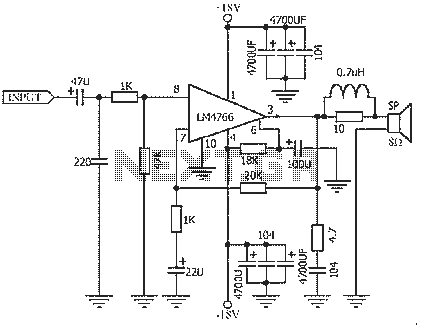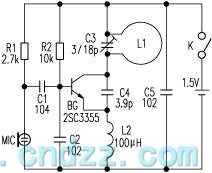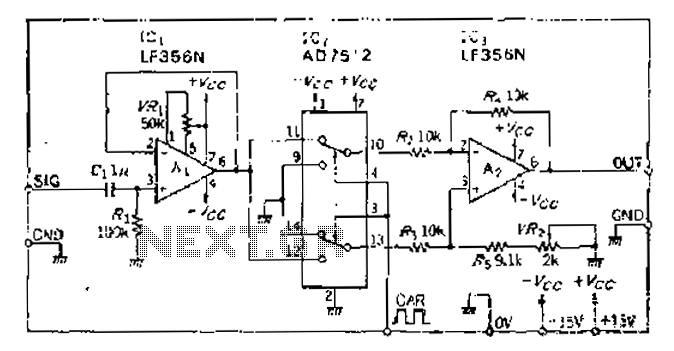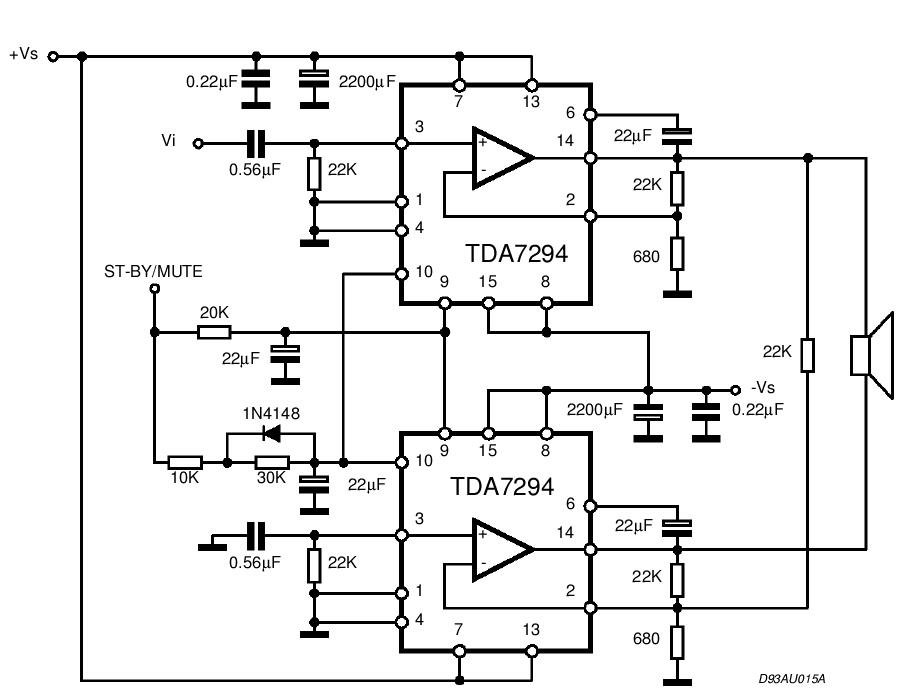
Monostable flip-flop circuit consisting of door

A CMOS NAND gate or NOR gate can form a monostable multivibrator, commonly referred to as a single-shot. This circuit is extensively used to delay pulse signals, allowing for signal stretching and shaping. The main principle involves utilizing the threshold characteristics of the gate input and incorporating an RC (resistor-capacitor) element to manage the charge and discharge cycle. While both NAND and NOR gates can create a single-shot circuit, their respective triggering modes result in different output logic levels. This configuration is illustrated in a monostable flip-flop circuit using these gates.
The monostable multivibrator, or single-shot circuit, operates by producing a single output pulse in response to a triggering input pulse. The duration of this output pulse is determined by the RC time constant, which is a product of the resistance (R) and capacitance (C) values in the circuit. When the input signal transitions from low to high, the capacitor begins to charge through the resistor. Once the voltage across the capacitor reaches a certain threshold, the output of the NAND or NOR gate changes state, producing a high output for a defined period before returning to low.
In a typical configuration using a CMOS NAND gate, the input is connected to one of the gate's terminals, while the RC network is connected to the other terminal. The output pulse width can be adjusted by varying the values of the resistor and capacitor. The output logic levels are determined by the gate's characteristics; for instance, a NAND gate will produce a low output when both inputs are high, while a NOR gate will yield a high output under the same condition.
The monostable multivibrator is widely used in digital circuits for applications such as pulse width modulation, timing applications, and signal conditioning. Its ability to shape and stretch pulse signals makes it an essential building block in various electronic systems.A CMOS NAND gate or NOR gate can form a single-shot, this single-shot circuit extensively used to delay the pulse signal, stretching and shaping. Monostable door circuit, its m ain principle is to use threshold gate input of gate level and join the RC element charge-discharge effect. NAND gates or logic gate can form a single-shot, but the difference of their respective trigger mode, the output logic levels are also different.
Shown for the monostable flip-flop circuit with gates thereof.
The monostable multivibrator, or single-shot circuit, operates by producing a single output pulse in response to a triggering input pulse. The duration of this output pulse is determined by the RC time constant, which is a product of the resistance (R) and capacitance (C) values in the circuit. When the input signal transitions from low to high, the capacitor begins to charge through the resistor. Once the voltage across the capacitor reaches a certain threshold, the output of the NAND or NOR gate changes state, producing a high output for a defined period before returning to low.
In a typical configuration using a CMOS NAND gate, the input is connected to one of the gate's terminals, while the RC network is connected to the other terminal. The output pulse width can be adjusted by varying the values of the resistor and capacitor. The output logic levels are determined by the gate's characteristics; for instance, a NAND gate will produce a low output when both inputs are high, while a NOR gate will yield a high output under the same condition.
The monostable multivibrator is widely used in digital circuits for applications such as pulse width modulation, timing applications, and signal conditioning. Its ability to shape and stretch pulse signals makes it an essential building block in various electronic systems.A CMOS NAND gate or NOR gate can form a single-shot, this single-shot circuit extensively used to delay the pulse signal, stretching and shaping. Monostable door circuit, its m ain principle is to use threshold gate input of gate level and join the RC element charge-discharge effect. NAND gates or logic gate can form a single-shot, but the difference of their respective trigger mode, the output logic levels are also different.
Shown for the monostable flip-flop circuit with gates thereof.





